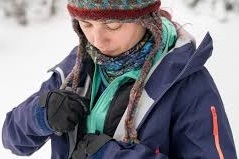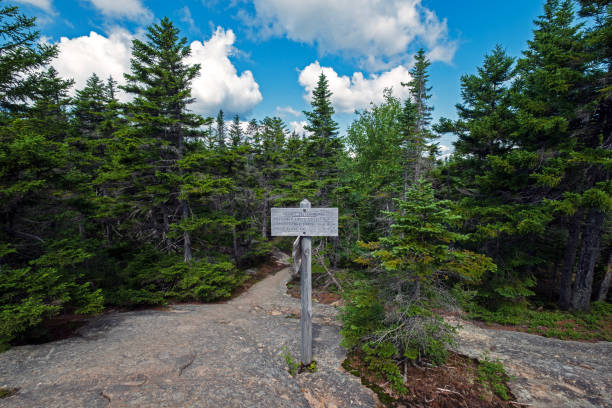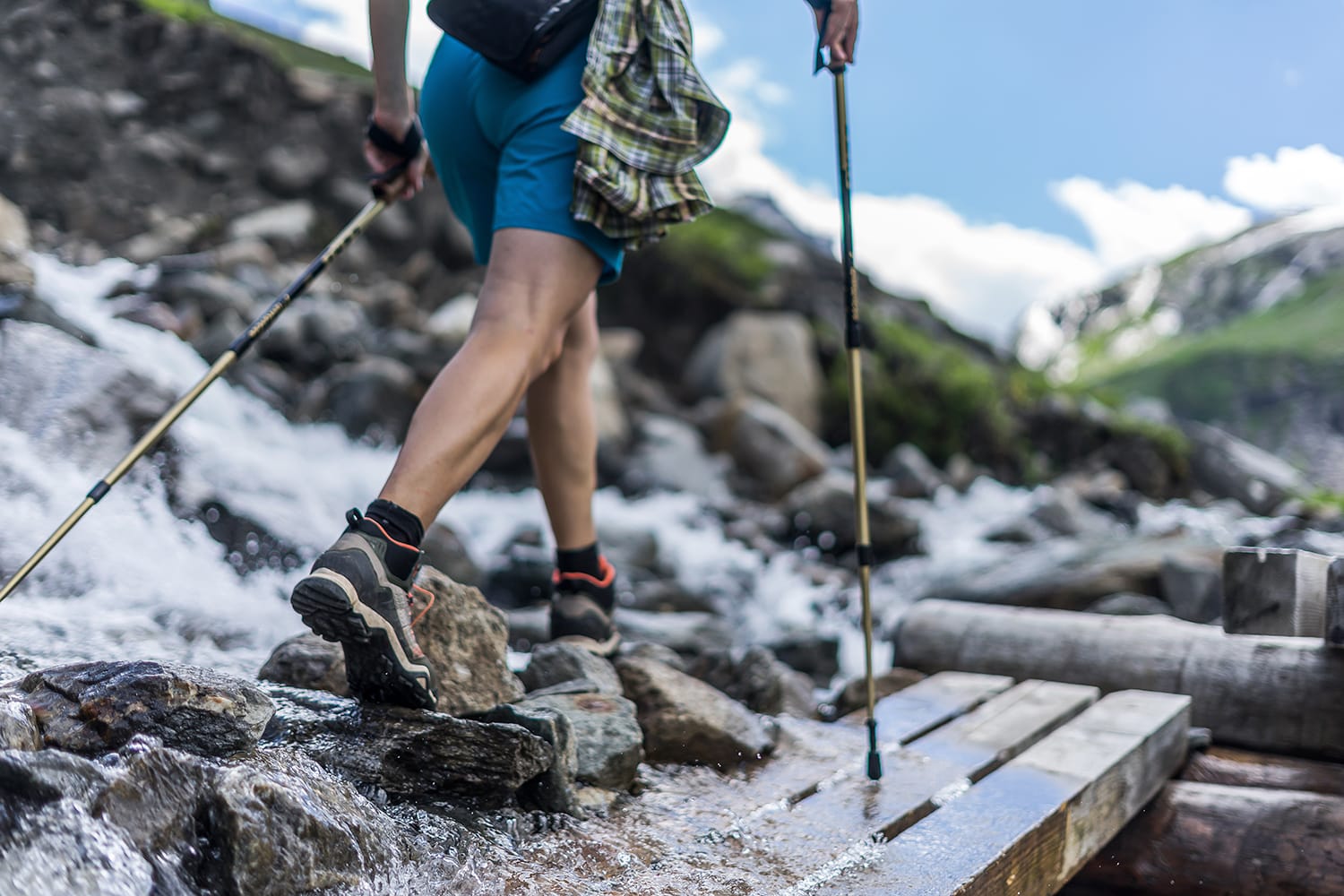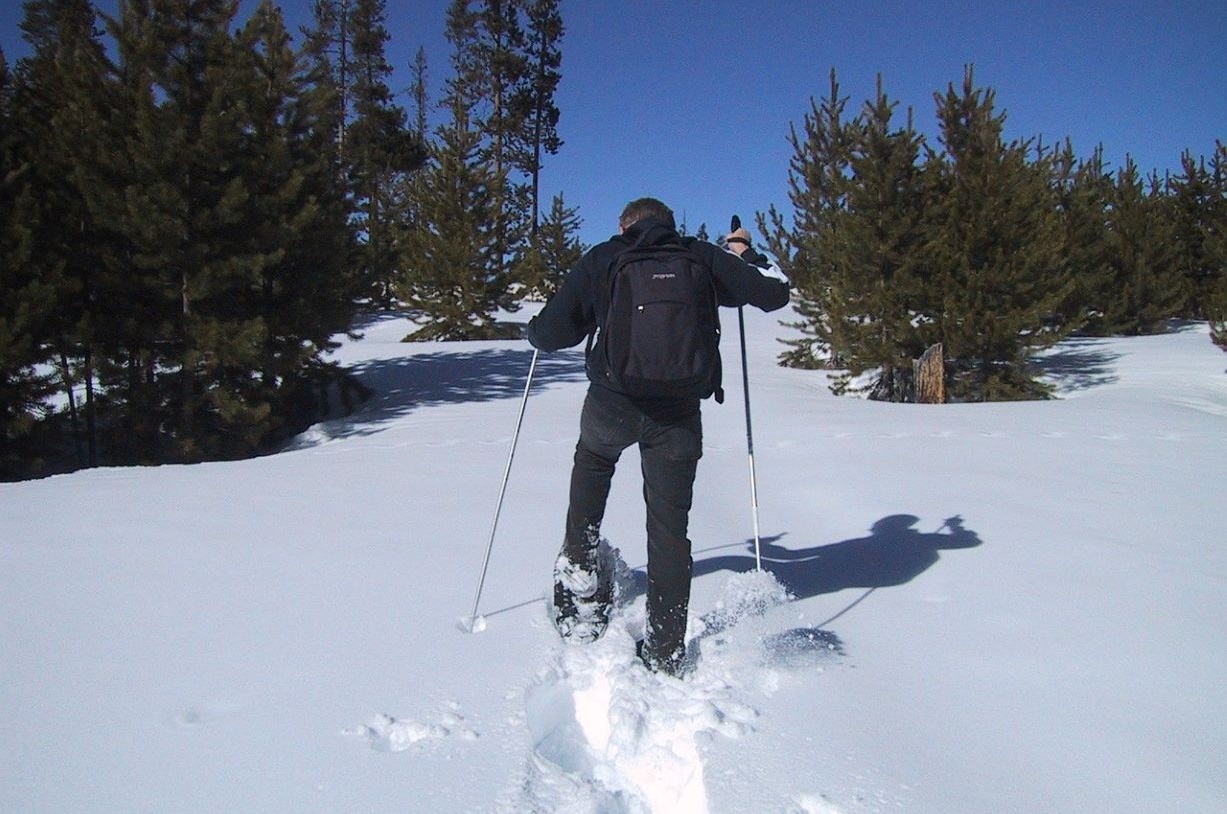Blog

- Details
- Written by: Rene Gade Rider
- Category: Blog
- Hits: 1489
Embarking on a winter hike is like stepping into a pristine wonderland, but with the enchanting beauty comes the biting chill. Successfully navigating the frosty trails requires more than just a warm coat. In this blog post, we'll unravel the importance of layering – the key to staying warm, comfortable, and adaptable during your winter hiking adventures.
1. The Power of Layers:
Winter temperatures can fluctuate dramatically, making layering a strategic and effective way to manage your body heat. Each layer serves a specific purpose, working together to create a thermal barrier against the cold.
2. Base Layer: Wicking Away the Chill:
Start with a moisture-wicking base layer. This snug-fitting, close-to-the-skin garment draws sweat away from your body, preventing the chilling effect of damp clothing. Look for materials like merino wool or synthetic fabrics designed to keep you dry.
3. Insulating Layer: Trapping the Warmth:
The insulating layer is the heart of your winter ensemble. This middle layer traps and retains body heat, providing essential warmth. Options include fleece jackets, down or synthetic puffer vests, or insulating sweaters. The goal is to create an insulating pocket of warmth close to your body.
4. Outer Layer: Shielding Against the Elements:
The outer layer acts as your shield against wind, rain, and snow. Choose a waterproof and windproof jacket that also allows moisture to escape, preventing you from getting wet from both the outside and within. This layer is your first line of defense against the harsh winter elements.
5. Adjustable Comfort:
The beauty of layering lies in its adaptability. As your body temperature fluctuates during different stages of your hike, you can easily adjust by adding or removing layers. This adaptability ensures that you stay comfortable and avoid overheating or chilling down.
6. Extremities Matter:
Don't forget to layer your extremities. Insulated gloves, moisture-wicking socks, and a hat or beanie play vital roles in maintaining overall body warmth. Heat often escapes through these areas, so pay special attention to keep your hands, feet, and head well-insulated.
Merino Wool Hiking Socks Lightweight Liner Gloves
7. Consideration for Activity Level:
Your activity level also influences how you layer. If you're breaking a sweat during a steep ascent, you might need to shed a layer to prevent overheating. Conversely, when taking a break or reaching a summit where winds are stronger, adding layers can provide additional warmth.
8. Plan for Unpredictability:
Winter weather can be unpredictable. Even on a clear day, conditions can change rapidly. Having the flexibility to add or remove layers ensures you're prepared for whatever surprises Mother Nature may have in store.
Conclusion:
In the winter wonderland of hiking trails, the importance of layering cannot be overstated. It's not just about staying warm; it's about staying comfortable, adaptable, and ready for whatever the frosty landscape may throw your way. So, embrace the art of layering, gear up accordingly, and let the beauty of winter unfold around you as you conquer the trails with warmth and resilience. Happy hiking!

- Details
- Written by: Rene Gade Rider
- Category: Blog
- Hits: 1534
In a world filled with bustling cities and digital distractions, hiking allows us to reconnect with the primal beauty of our planet. From snow-capped peaks to lush forests, the Earth boasts a tapestry of landscapes waiting to be explored. In this blog post, we unveil the top 12 most popular hiking destinations that beckon adventurers with their awe-inspiring vistas, diverse ecosystems, and the promise of unforgettable journeys.
Appalachian Trail, United States: Embark on a 2,000-mile odyssey through the eastern United States. The Appalachian Trail winds through diverse terrain, offering hikers a chance to experience everything from verdant forests to rugged mountain peaks.
Torres del Paine Circuit, Chile: Patagonia's crown jewel, the Torres del Paine Circuit, is a breathtaking expedition through glacial valleys and past towering peaks. This trail promises an immersive encounter with the untamed beauty of southern Chile.
Inca Trail, Peru: Step into the footsteps of ancient civilizations on the Inca Trail. This iconic trek culminates in the mystical city of Machu Picchu, rewarding hikers with a blend of archaeological wonders and stunning Andean landscapes.
Cinque Terre, Italy: Italy's Cinque Terre enchants hikers with its dramatic coastal trails, connecting five colorful cliffside villages. Each step unveils panoramic views of the Ligurian Sea and terraced vineyards, making it a feast for the senses.
Swiss Alps, Switzerland: The Swiss Alps boast an extensive network of trails that wind through alpine meadows, alongside pristine lakes, and beneath towering peaks. Whether you're a seasoned mountaineer or a casual walker, Switzerland offers hiking experiences for all.
The Great Wall of China, China: Unravel the mysteries of history as you trek along the Great Wall of China. Hiking sections of this ancient marvel allows you to witness not only the architectural prowess but also the stunning landscapes that surround it.
Zion National Park, United States: Utah's Zion National Park is a red rock wonderland. The park's trails lead through narrow slot canyons, past towering sandstone cliffs, and to viewpoints that showcase the mesmerizing beauty of the American Southwest.
Queen Charlotte Track, New Zealand: The Queen Charlotte Track in New Zealand weaves through the lush landscapes of the Marlborough Sounds. Coastal vistas, native bush, and encounters with New Zealand's unique wildlife make this track a favorite among hikers.
Grand Canyon, United States: A geological masterpiece, the Grand Canyon offers an array of hiking trails catering to all skill levels. Descend into the canyon to witness its layers of rock, and be rewarded with breathtaking views that change with every step.
Trolltunga, Norway: Translated as "Troll's Tongue," this iconic rock formation in Norway offers one of the most exhilarating hikes. The trail challenges hikers with steep ascents, but the reward—a protruding rock over a stunning fjord—is well worth the effort.
Kangaroo Island Wilderness Trail, Australia: Kangaroo Island, off the coast of South Australia, unveils its wild beauty on this coastal trail. Encounter pristine beaches, rugged cliffs, and the unique wildlife that calls this island home.
Mount Kilimanjaro, Tanzania: Crowned by glaciers, Mount Kilimanjaro is Africa's highest peak. Climbing this iconic mountain takes you through different ecological zones, offering a once-in-a-lifetime experience and panoramic views of the Tanzanian landscape.
Conclusion: These top 12 hiking destinations are not just trails; they are gateways to the wonders of our planet. From the towering peaks of the Himalayas to the coastal charm of Cinque Terre, each destination invites you to lace up your boots, breathe in the fresh air, and embark on a journey that will leave an indelible mark on your soul. Nature's grandeur awaits – are you ready to answer the call of the trail?

- Details
- Written by: Rene Gade Rider
- Category: Blog
- Hits: 1556
Winter hiking, with its snow-covered landscapes and crisp air, offers a magical escape into nature. Amidst the breathtaking beauty, it's easy to forget one crucial element of outdoor activity: staying hydrated. In this blog post, we'll explore why maintaining proper hydration is just as important in winter as it is in the heat of summer.
Nuun Sport Electrolyte Tablets for Proactive Hydration, Variety Pack
1. Deceptive Dehydration: Cold temperatures can create a deceptive sense of hydration. The chilly air can mask the body's need for water, leading hikers to underestimate their fluid requirements. However, the cold, dry air of winter can actually increase the risk of dehydration as moisture is lost through breath and increased respiratory effort.
2. Increased Respiratory Effort: Breathing in cold air requires more effort from the respiratory system. As you exert energy during a winter hike, you may not realize that you are losing water vapor with each breath. This increased respiratory effort, combined with sweating under layers of clothing, can contribute to fluid loss.
3. Sweat Evaporation: Despite the freezing temperatures, you still sweat during winter activities. Layers of clothing and the dry winter air facilitate the evaporation of sweat, which can go unnoticed. This continuous loss of fluids needs to be replenished to ensure your body functions optimally.
4. Cold Weather Constriction: Cold weather can cause blood vessels to constrict, leading to decreased blood flow and potentially compromising the body's ability to regulate temperature. Proper hydration helps maintain blood volume and circulation, ensuring that essential nutrients and oxygen reach your muscles and organs efficiently.
5. Combatting Hypothermia: Staying well-hydrated is a crucial component of preventing hypothermia, a condition where the body loses heat faster than it can produce it. Dehydration can exacerbate this risk, as it impairs the body's ability to regulate temperature effectively.
6. Lip Balm and Skin Health: While not directly related to hydration, winter hiking often involves exposure to cold, windy conditions. Staying well-hydrated contributes to skin health, and using lip balm and moisturizers can help prevent chapped lips and dry skin caused by winter elements.
Tips for Staying Hydrated During Winter Hiking:
-
Drink Before You Feel Thirsty: Thirst is not always a reliable indicator of hydration needs. Consciously drink water at regular intervals, even if you don't feel thirsty.
-
Choose Insulated Water Bottles: Insulated water bottles help prevent water from freezing in cold temperatures, ensuring you have access to liquid refreshment throughout your hike. This insulated Hydro Flask does the trick nicely!
-
Consume Warm Fluids: Hot beverages like herbal tea or warm water can be a comforting and hydrating choice during winter hikes. Carry an insulated thermos to keep your drinks warm.
-
Monitor Urine Color: Keep an eye on the color of your urine. Clear or light yellow urine indicates proper hydration, while dark yellow or amber may suggest dehydration.
Conclusion: In the enchanting world of winter hiking, where every step is a brushstroke on a snowy canvas, it's easy to forget the basics. Yet, staying hydrated remains a fundamental aspect of a safe and enjoyable winter hiking experience. By recognizing the unique challenges of winter dehydration and adopting proactive hydration practices, you can ensure that your winter adventures are not only memorable but also healthily invigorating. Drink up and stay warm!
Top recommended hydration products:

- Details
- Written by: Rene Gade Rider
- Category: Blog
- Hits: 1575

- Details
- Written by: Rene Gade Rider
- Category: Blog
- Hits: 1546
As winter transforms the outdoors into a picturesque wonderland, the call of winter hiking becomes irresistible for adventure seekers. Yet, navigating through snow-covered trails poses unique challenges. Enter snowshoes – the unsung heroes of winter hiking. In this blog post, we'll unravel the importance of strapping on snowshoes, along with a key accessory, heel risers, to enhance your winter hiking experience.
-
Float On Top of the Snow: One of the primary benefits of snowshoes is their ability to distribute your weight more evenly, preventing you from sinking into deep snow. By providing a larger surface area, snowshoes act like flotation devices, allowing hikers to walk on top of the snow rather than trudging through it. This "floatation" effect makes winter hiking more energy-efficient and less strenuous.
-
Enhanced Traction and Stability: Winter trails can be slippery, especially when snow turns to ice. Snowshoes often feature built-in crampons or metal teeth that provide excellent traction on icy surfaces. This added grip not only reduces the risk of slips and falls but also increases stability, enabling hikers to confidently tackle varying terrains in winter conditions.
-
Preserving the Trail and Environment: Snowshoes play a crucial role in minimizing environmental impact during winter hikes. By dispersing your weight over a larger area, you help prevent postholing – the process of creating deep holes in the snow with each step. This practice helps preserve the integrity of the trail and minimizes the disturbance to wildlife habitats beneath the snow.
-
Access to Untouched Wilderness: Snowshoes unlock access to areas of the wilderness that might be otherwise inaccessible during winter. With the ability to traverse deep snow, hikers can explore untouched landscapes, discovering the pristine beauty that winter conceals. It's a unique opportunity to experience the serenity of nature in its undisturbed state.
-
Versatility Across Terrains: Whether you're meandering through a snowy forest or ascending a snow-covered mountain, snowshoes prove versatile across a range of winter terrains. Many models are designed for specific activities, ensuring you can find the right pair to match your winter hiking ambitions.
-
The Role of Heel Risers: Heel risers, often integrated into modern snowshoe designs, provide an additional layer of comfort during ascents. When climbing uphill, heel risers reduce strain on your calf muscles by creating a slight incline, allowing for a more natural and ergonomic stride. This small but significant feature enhances the overall efficiency and comfort of your winter hiking experience, especially during steep inclines.
Conclusion: In the magical realm of winter hiking, where the world is blanketed in snow and ice, snowshoes, along with heel risers, emerge as indispensable companions. From enhancing traction and stability to preserving the environment and granting access to untouched landscapes, these tools are a winter hiker's best friend. So, the next time you embark on a snowy adventure, don't forget to strap on your snowshoes, adjust those heel risers, and step into a winter wonderland with confidence and joy. Happy trails!
Some popular snowshoes to consider:
- MSR EVO Trail Backcountry and Trekking Snowshoes
- MSR Lightning Ascent Backcountry & Mountaineering Snowshoes w/ Paragon Bindings
- MSR REVO Ascent Backcountry & Mountaineering Snowshoes w/ Paragon Bindings
- Atlas Range Mountain Snowshoes
- Atlas Helium Trail Snowshoes
- Tubbs Flex VRT Snowshoes
- Tubbs Flex RDG Snowshoes
- Tubbs Women's Flex RDG Snowshoes
- Tubbs Flex TRK Snowshoes
- Tubbs Women's Flex TRK Snowshoes

- Details
- Written by: Rene Gade Rider
- Category: Blog
- Hits: 1411
Yaktrax Diamond Grip All-Surface Traction Cleats